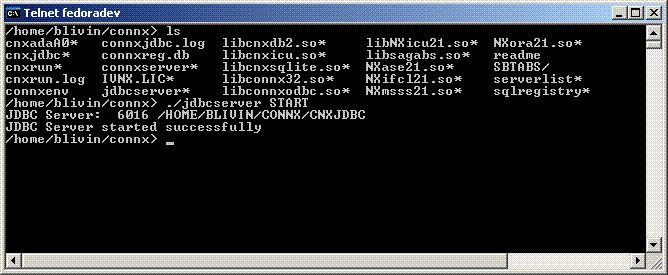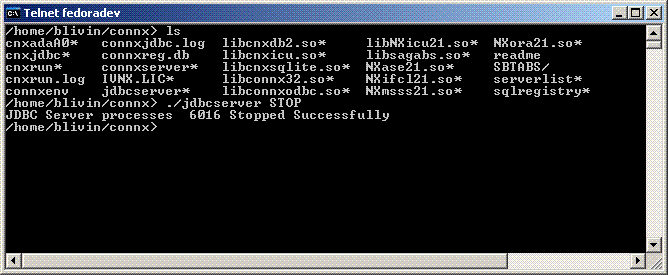These steps are required after installation and before running any database connections for UNIX systems. See the online help describing connection procedures for your specific data source.
Go to the CONNX directory
that was created in the installation directory specified during installation
of the CONNX UNIX Client. The cnxjdbc executable file resides in that
folder.
Verify that your data
source names (DSNs) are registered correctly.
At the command prompt, enter ./sqlregistry
Select option 1 to view all
the current registry settings
If your DSN is in the list, go to the next step
If your DSN is not in the list, enter CONNX.DSNS.dsn that you want to
register
Select option 2 for a string
value
Enter the fully qualified path to the CONNX CDD. The CDD must be located
on a UNIX system. Add a semicolon. [optional] Add a DSN comment freeform
string. Add a semicolon.
Example:
/opt/connx/MyData.cdd;;
Enter 5 to exit the the /sqlregistry program
Alternatively you may utilize the createJDBCDSN utility script to manage
your JDBC DSNs. Information about the createJDBCDSN utility script
is located at the end of this section.
At the UNIX terminal session prompt, enter the server command to run the executable as a background process:
./jdbcserver START
This will create a connxjdbc.log
file that contains JDBC Server information, error messages, and
status.

To stop the JDBC Server, at the UNIX terminal session prompt, enter the server command to run the executable as a background process:
./jdbcserver STOP

To verify that the JDBC Server is active, at the UNIX terminal session prompt, enter the server command to run the executable as a background process:
./jdbcserver STATUS
./createJDBCDSN –l
This form of the createJDBCDSN
script will list all configured JDBC DSNs.
./createJDBCDSN <DSN>
<CDD> [comment]
DSN: Top level name of CONNX JDBC DSN
CDD: Fully qualified path to CONNX CDD
comment: [optional]
comment
This form of the createJDBCDSN script will add a new DSN to the registry or will overwrite an existing DSN entry. If a DSN entry already exists the user will be prompted before overwriting the old value.